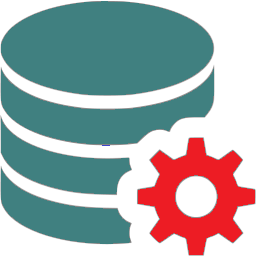Role of Data Architecture in Data Driven Strategy

With data volumes drowing exponentially & with the rapid innovation of data stack,companies struggle to keep pace. The correct understanding of role of data architecture in data driven strategy will enable organizations to revolutionalize their data management strategies.
What is Data Driven Strategy?
In a data-driven strategy, decisions are made based on data instead of assumption or intuition. As this approach uses facts and truth (hard information), it offers measurable & certain advantages. The data-driven approach makes it easier to be objective about decisions. The results of your data analysis can tell you whether it would be wise to follow a particular course of action.
What is Data Architecture?
Data Architecture is the foundation of an organization’s data strategy. It is a framework of models, policies, rules and standards that an organization uses to manage data and its flow through the organization. It is one of the main elements of data platform. It is a process of designing, building & maintaining structure of the organization’s data assets.
What’s the importance of Data Architecture?
Within a company, everyone wants data to be easily accessible, to be cleaned up well, and to be updated regularly. Successful data architecture standardizes the processes to capture, store, transform and deliver usable data to people who need it. It identifies the business users who will consume the data and their varying requirements. The main objective of a well-designed data architecture is to reduce data silos, minimize data duplication and improve the overall efficiency of the data management process. As per Forbes, 52% of global enterprises are actively analyzing data to derive operational insights for making better decisions. 71% of these businesses are of the view that organizational spending on data and analytics is going to speed up in the next few years.
Evolution of Data Architecture
The evolution of data architectures over the years has accordingly shaped the effectiveness of data strategy. Data models, architectures & storage have evolved with time, catering to different analytical requirements. In this article we are showcasing high level details of the evolution of data architectures over time.

In the early days, Operational Data Store (ODS) was used to help management information systems. ODS used to store current data (0-12 months history) and used primary for operational decision making of operational users. Later with arrival of Business Intelligence tools, data architectures evolved into Data Marts and Dimensional modeling techniques focusing on descriptive and diagnostic analytic Then Enterprise Data Warehouses arrived to help cater cross sectional analysis & long term data patterns. However EDW lack the needs of ad-hoc & interactive analysis. Hence Multi-dimensional Databases (MDDB) were developed which helped in drill up/down/through, what-if analysis, etc. Later for the analytical applications (workloads) to process data at an aggregate level, need for more robust hardware lead to arrival of DW Appliances. Before invention of cloud, there was limited interaction between storage and compute. In addition need to process/analyse semi-structured and unstructured data helped invention of Data Lakes. DW and Data Lake architectures are centralized implementations that limit data availability, scalability, duration, domain understanding of data and are more tech-oriented than user-oriented. Data Mesh architectures addressed these challenges by having the data product owners (responsible for business applications) owning the data mesh so they understand the business, meaning, & data usage. They work with data engineers to design and distribute analytical data products with its catalog for every data user/consumer to understand & use. Data Fabric is similar to Data Mesh except that Data Mesh is business domain oriented whereas Data Fabric is data driven and tech-oriented. In Lake House architecture, each type of analytical workload requires its own data pipeline due to different data access requirements.
Conclusion
Data Architectures are the foundations of all business data strategies. Depending on the data analytics maturity of an organization, the variety of data it holds & requirement of analytical workloads, a specific type of data architecture can be adopted. With the right data architectures for your specific use case, you can ensure the successful implementation of data strategies.
Preparo Analytics empowers data driven leaders with data and analytics solutions to make businesses stable, better, & competitive. The company enables data driven leaders with data driven strategy, data architecture, data modeling & data governance.
Curious to learn more about how we can help you? Get in touch today.
